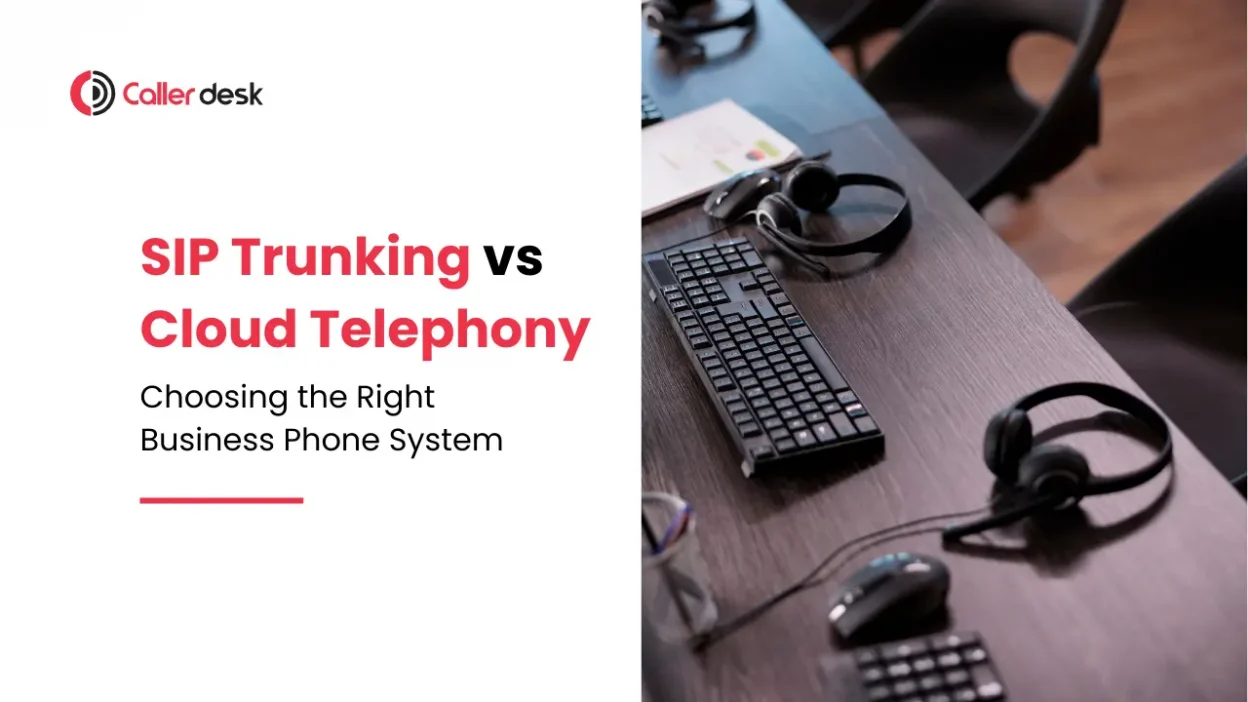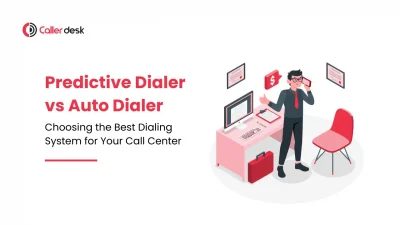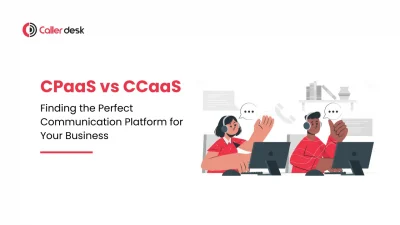Are you struggling to choose the right phone system for your business? With so many options available, it’s understandable to feel a bit lost. If you’re a call center or a business looking to switch to a cloud phone system, you’re likely debating between SIP Trunking and Cloud Telephony. Both offer significant benefits, but which one is truly better for your needs?
This blog will give the pros and cons of each, helping you make an informed decision that could save your business time and money.
Understanding SIP Trunking and Cloud Telephony
What is SIP Trunking?
SIP Trunking (Session Initiation Protocol Trunking) uses your existing PBX (Private Branch Exchange) system to make and receive calls over the internet. It converts voice signals into data packets that are transmitted over the web.
Key Advantages of SIP Trunking
- Cost Savings: Reduces phone bills by using a single network for both voice and data.
- Scalability: Easily adds more lines without requiring additional physical infrastructure.
- High Reliability: Ensures quality voice transmission with a robust internet connection.
- Flexibility: Works seamlessly with existing PBX systems.
Potential Drawbacks of SIP Trunking
- Upfront Costs: Requires initial investment in compatible hardware and a strong internet connection.
- Maintenance Needs: Ongoing maintenance and technical management are necessary.
- Technical Expertise: Setup and troubleshooting require technical know-how.
What is Cloud Telephony?
Cloud Telephony, also known as hosted PBX (Private Branch Exchange), manages phone systems via the internet through a service provider’s platform, eliminating the need for on-premises hardware.
Key Advantages of Cloud Telephony
- Lower Initial Costs: Minimal upfront investment as there is no need for extensive hardware.
- User-Friendly: Simple interfaces and setup processes make it accessible to non-technical users.
- Scalability: Easily scales to accommodate business growth.
- Mobility: Supports remote working, enabling calls from anywhere with an internet connection.
- Advanced Features: Includes features like call forwarding, IVR, call recording, and analytics.
Potential Drawbacks of Cloud Telephony
- Internet Dependence: Requires a stable, high-speed internet connection for optimal performance.
- Ongoing Costs: Subscription fees can accumulate over time.
- Security Concerns: Data is managed by a third-party provider, raising potential security issues.
Comparing SIP Trunking and Cloud Telephony
1. Cost Efficiency
- SIP Trunking: Higher upfront costs due to necessary hardware but can offer lower long-term expenses, especially for larger businesses.
- Cloud Telephony: Lower initial costs with predictable monthly fees, making it ideal for small to medium-sized businesses.
2. Scalability and Flexibility
- SIP Trunking: Scalable but may require additional hardware and technical adjustments as the business grows.
- Cloud Telephony: Highly scalable with easy adjustments through the provider’s platform.
3. Reliability and Maintenance
- SIP Trunking: Reliable with proper internet connectivity, though it requires ongoing maintenance and technical support.
- Cloud Telephony: Typically reliable with a good internet connection and minimal user maintenance.
4. Feature Set
- SIP Trunking: Integrates with existing systems but may lack some advanced features of cloud-based solutions.
- Cloud Telephony: Feature-rich with continuous updates from the provider, offering cutting-edge capabilities.
Which is Better for Your Business?
1. Larger Businesses and Call Centers
SIP Trunking is often the superior choice for larger enterprises and call centers, especially if you already have an on-premises PBX system. Here’s why:
- Leverage Existing Infrastructure: If your business already has a PBX system in place, SIP Trunking allows you to maximize your current investment.
- Cost Efficiency: Over time, SIP Trunking can be more cost-effective, particularly for businesses with high call volumes. It reduces long-distance and international call charges.
- Flexibility and Control: SIP Trunking provides greater control over your communications infrastructure. You can customize and manage your system according to your specific needs.
- Technical Expertise: Larger businesses often have the technical expertise required to manage and maintain SIP Trunking systems effectively.
2. Small to Medium-Sized Businesses
Cloud Telephony tends to be the best fit for small to medium-sized businesses. Here’s why it stands out:
- Lower Upfront Costs: Unlike SIP Trunking, Cloud Telephony doesn’t require significant initial investment in hardware. This makes it an affordable option for smaller businesses.
- Ease of Use: Cloud Telephony is user-friendly and easy to set up. You don’t need in-depth technical knowledge to begin.
- Scalability: As your business grows, Cloud Telephony allows you to add or remove lines quickly without worrying about physical infrastructure.
- Mobility: Cloud Telephony supports remote work. Employees can make and receive calls from anywhere with an internet connection, enhancing flexibility.
- Comprehensive Features: Cloud Telephony comes with a wide array of features such as call forwarding, IVR, call recording, and analytics, helping you streamline your business communication.
Conclusion
Both SIP Trunking and Cloud Telephony have their unique benefits and potential drawbacks. By evaluating your current infrastructure, budget, and long-term communication goals, you can choose the solution that best aligns with your business needs.
Consult with Caller Desk, the best cloud telephony service provider, for expert guidance and seamless integration services that can transform your business communication. Download our free guide on optimizing call routing for your business or start your free trial of our cloud-based call routing system today!





